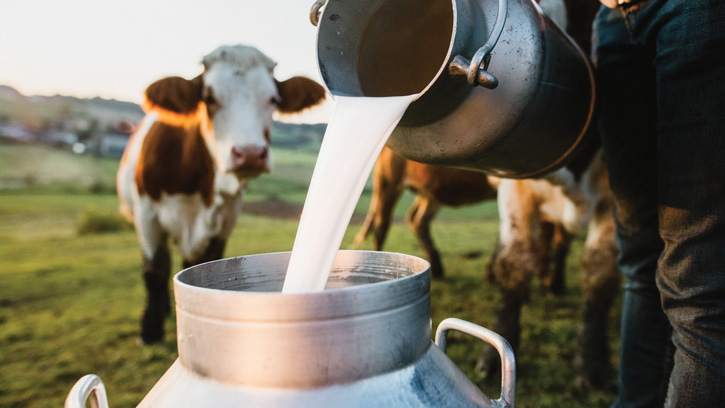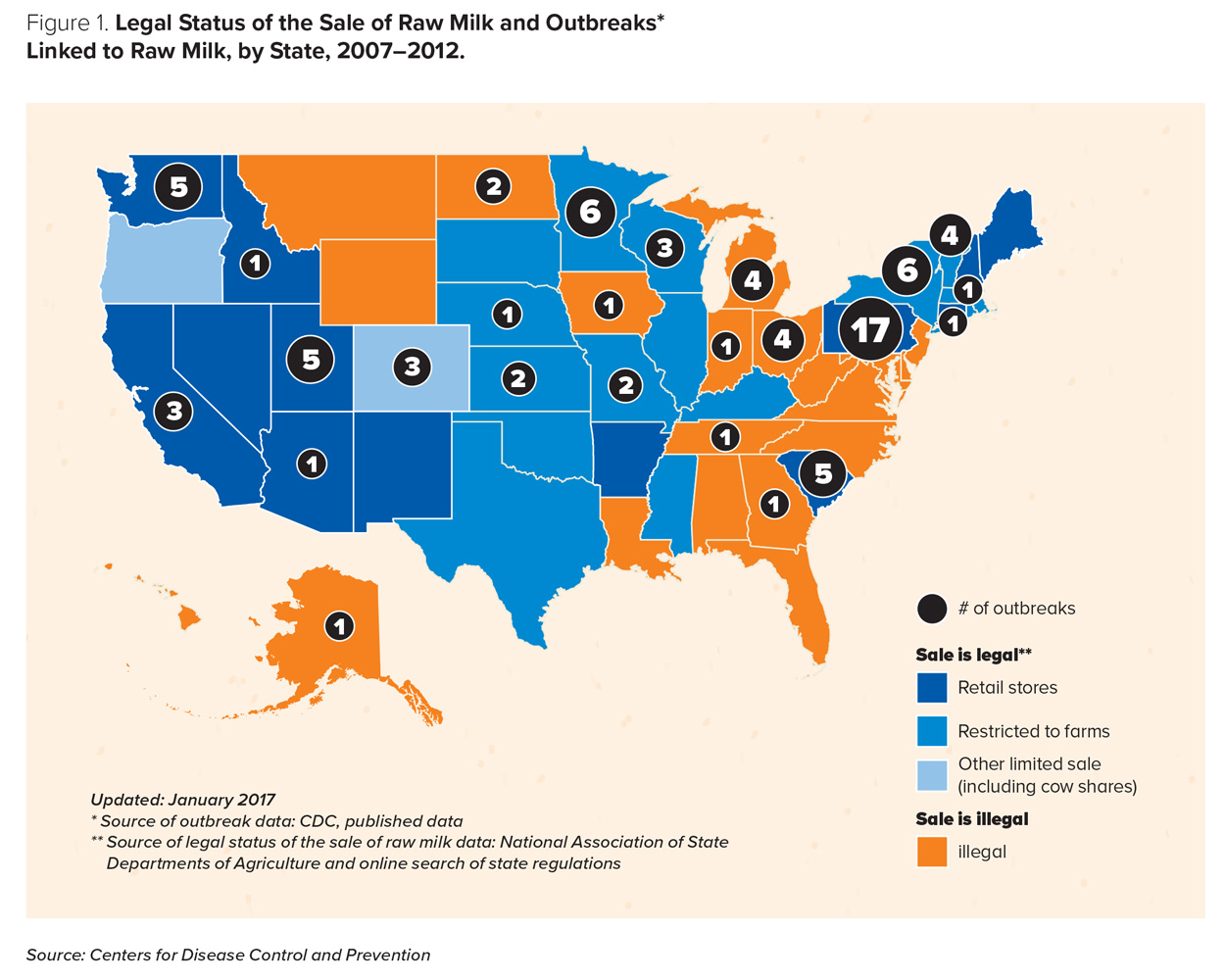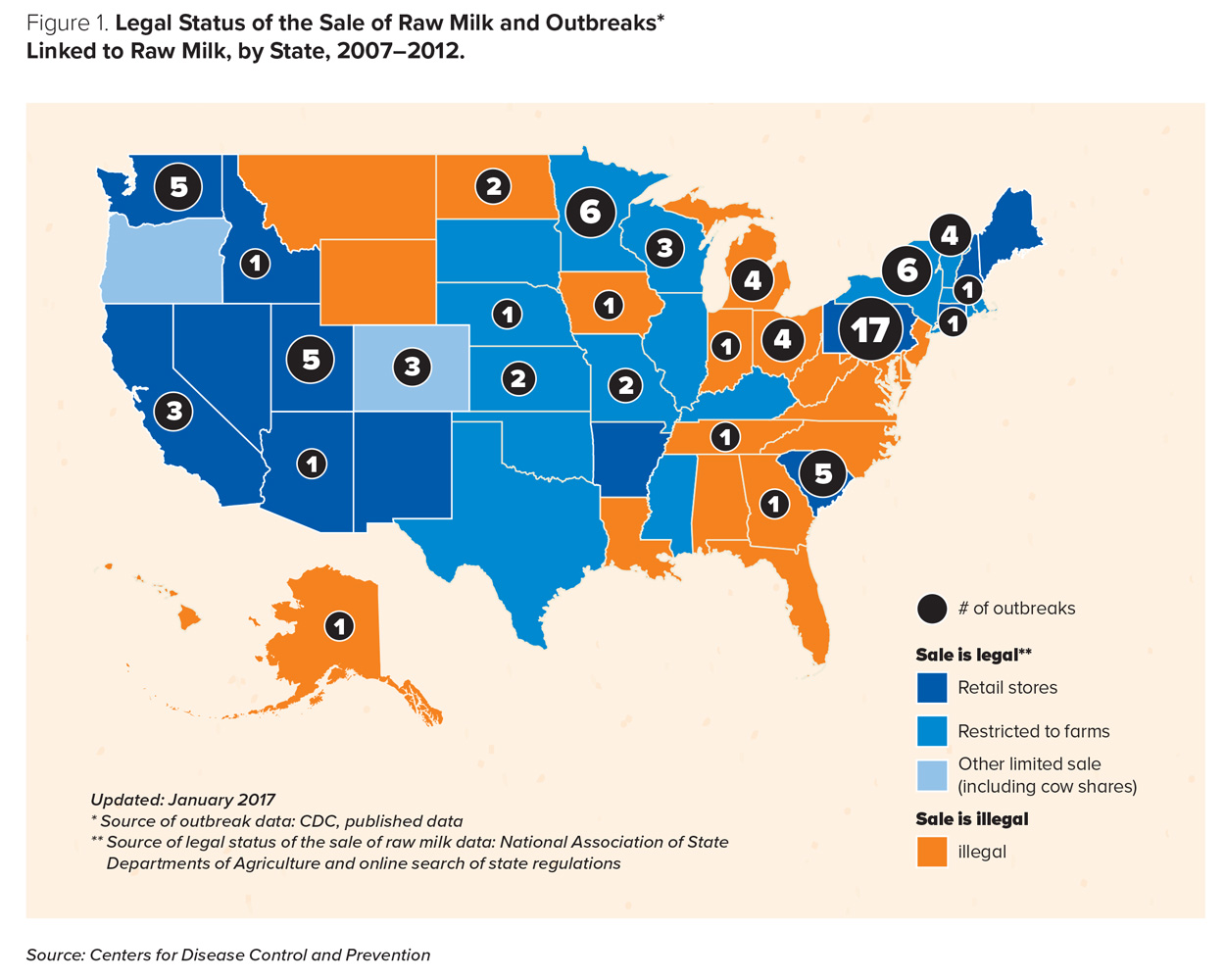Is Raw Milk Worth the Risk?
Safety & Quality | APPLIED SCIENCE
The consumption of raw dairy is a contentious issue: Science battles myths, social media may trump reliable internet sources, and food safety shakes hands with politics. Given the “buy local” trend, the general distrust of technology and food processing, and the misinformation posted on websites and blogs, some consumers now believe raw milk is better than pasteurized milk—even in the face of testimonials about serious, life-threatening illnesses in young victims whose parents believed dubious health and nutrition claims.
“I’ve always been surprised when I hear people extol the virtues of raw milk or raw juices,” says Bill Marler, a leading litigator of foodborne illness cases. “I think there’s somewhat of a false sense of security in our food. In many respects, because we’re so good at feeding so many people safely, I think otherwise educated people still don’t necessarily see the risks involved in certain food consumptions.”
Health claims about consumption of raw milk either have not been substantiated or are of very low consequence in the case of vitamin loss. But there is extensive documentation showing that raw milk is a known public health risk. In fact, raw milk is one of the world’s most dangerous foods, responsible for almost three times more hospitalizations than any other foodborne disease source (Alegbeleye et al. 2018). The symptoms of raw milk pathogen consumption range from diarrhea, vomiting, nausea, fever, and abdominal cramps to severe syndromes such as Guillain-Barré, hemolytic uremic syndrome, septicemia, meningitis, and intrauterine infections in pregnant women (Alegbeleye et al. 2018). Spontaneous abortion or even death may occur.
Between 1993 and 2012, at least 1,909 illnesses and 144 hospitalizations were recorded in the United States from outbreaks attributed to unpasteurized milk consumption (CDC 2017). A substantial number of these raw milk outbreaks involved children: From 2007 to 2012, at least one child under the age of five was involved in 59% of the outbreaks. One- to four-year-olds accounted for 38% of the Salmonella illnesses and 28% of the Shiga toxin-producing E. coli illnesses, which can cause kidney failure, long-term health consequences, and death (CDC 2017).
Some of the outbreaks were attributed to raw cheeses such as chevre and Mexican-style queso fresco. Even fermented products such as kefir were susceptible to pathogens. Raw milk is also a potential source of antimicrobial-resistant bacteria that can horizontally transfer resistance to commensal gut bacteria and thwart the treatment of infections in humans (Zastempowska et al. 2016).
Raw Milk Regulation
Because milk is an important part of nutrition for infants, children, and older adults who may not be given a choice in what products they consume, raw milk consumption requires regulation. The interstate sale and distribution of raw dairy was prohibited by the U.S. Food and Drug Administration (FDA) in 1987, but this still leaves the legality of intrastate sale and distribution up to the various states.
Twenty states explicitly prohibit raw milk sales. Thirty states allow it in different situations, with some allowing retail sales and others permitting direct sales from farm to consumer or through “cow share” agreements, where buyers pay farmers a fee to care for the animals and then receive a percentage of the milk produced.
The Centers for Disease Control and Prevention (CDC) has created a map with the various state regulations, highlighting where raw milk outbreaks have occurred and showing that outbreaks can jump state lines to states where raw milk sales are illegal (Figure 1). The FDA has sent warning letters and pursued producers who ship raw dairy across state lines (FDA 2017); between 2004 and 2016, the FDA sent out seven warning letters and filed two court injunctions against producers that have sold raw dairy across state lines. But the FDA raw milk website has not been updated since Nov. 17, 2017, which calls into question whether the agency has the resources to police and prosecute interstate sale and distribution of raw milk.
Among the states with prohibitions, Hawaii recently set up an embargo to quash the sale of raw milk. The Hawaii State Department of Health discovered that approximately 20 pet stores were selling raw goat’s milk as “pet food,” but the product was being diverted for human consumption. According to state law, Hawaiian retailers and restaurants may purchase only pasteurized Grade A milk and dairy products. Under the embargo enacted July 1, 2021, retailers with raw milk in their possession are fined up to $10,000 per day unless they remove and destroy the product.
In California, where retail sale of raw milk for human consumption is legal, raw goat milk was recalled and quarantined in 2021 due to contamination with Campylobacter. The same producer also had to implement recalls in 2019 and 2020 because of Campylobacter in its raw milk.
Consumer and State Legislator Education
Both the FDA and the CDC offer informative, data- and fact-driven websites explaining the dangers of consuming raw milk. A working group of scientists, consumers, and attorneys also sponsors the website RealRawMilkFacts.com (RRMF). The site supplies data on the dangers of raw milk consumption, in addition to providing compelling video interviews with families and individuals who have experienced medical issues related to raw milk consumption. The RRMF working group lobbies legislators at the state level to discourage bills that allow the sale and distribution of raw dairy intrastate.
“State legislators tend to run a bit conservative, and one of the things they really, really, really like are small farmers who come in and rail against government intervention and regulation,” says Marler, an RRMF sponsor. “So it’s sometimes a very tough row to hoe, trying to convince legislators to not move forward with raw milk bills.”
Milk Pasteurization Alternatives
Scientific evidence indicates that pasteurization is still the incontrovertible safeguard for dairy processing (Alegbeleye et al. 2018). But with the raw milk trend in mind, food scientists are developing new processing methods or dusting off older ones that lower the biological load of milk and dairy products while avoiding the heat treatment of pasteurization. These emerging or reprised processing technologies include high pressure processing, ultra high pressure processing, supercritical fluid technology, pulsed electric fields, microfiltration, electron beam technology, and a hurdle approach employing multiple methods (Alegbeleye et al. 2018). Ideally, consumers will find these alternatives more acceptable than pasteurization and abandon the consumption of raw dairy.
Based on the history of raw milk legislation, government alone cannot safeguard our food supply. Food safety is—and will continue to be—the responsibility of food scientists, consumer groups, litigators, food producers, growers, and educators in addition to federal and state legislators. “When people work together, [things] can go right,” says Marler.
Learning Objectives
- Understand food safety risks associated with raw milk consumption.
- Review current raw milk sales regulations.
- Preview new processing methods that offer a safe alternative to pasteurization.




